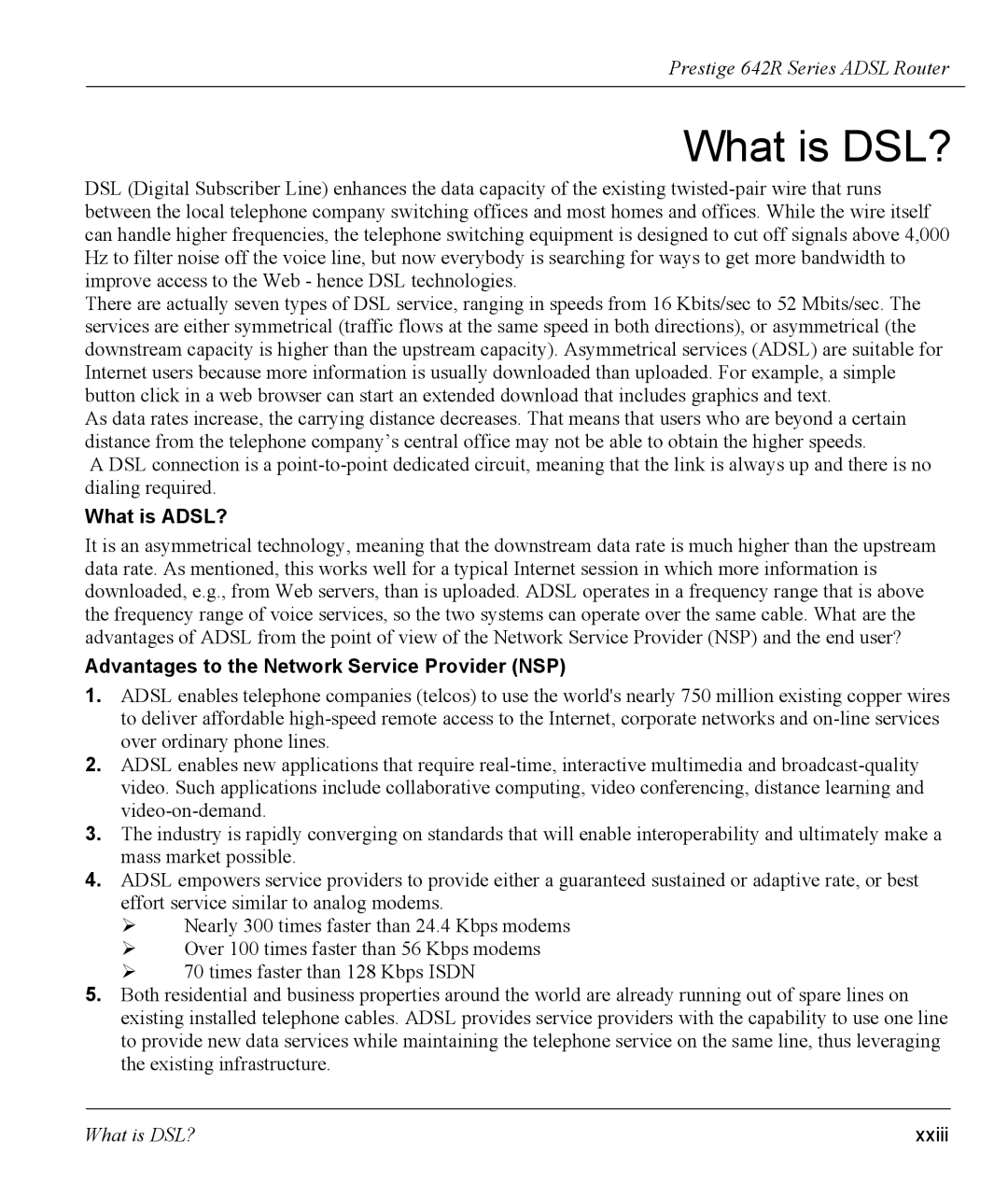
Prestige 642R Series ADSL Router
What is DSL?
DSL (Digital Subscriber Line) enhances the data capacity of the existing
There are actually seven types of DSL service, ranging in speeds from 16 Kbits/sec to 52 Mbits/sec. The services are either symmetrical (traffic flows at the same speed in both directions), or asymmetrical (the downstream capacity is higher than the upstream capacity). Asymmetrical services (ADSL) are suitable for Internet users because more information is usually downloaded than uploaded. For example, a simple button click in a web browser can start an extended download that includes graphics and text.
As data rates increase, the carrying distance decreases. That means that users who are beyond a certain distance from the telephone company’s central office may not be able to obtain the higher speeds.
A DSL connection is a
What is ADSL?
It is an asymmetrical technology, meaning that the downstream data rate is much higher than the upstream data rate. As mentioned, this works well for a typical Internet session in which more information is downloaded, e.g., from Web servers, than is uploaded. ADSL operates in a frequency range that is above the frequency range of voice services, so the two systems can operate over the same cable. What are the advantages of ADSL from the point of view of the Network Service Provider (NSP) and the end user?
Advantages to the Network Service Provider (NSP)
1.ADSL enables telephone companies (telcos) to use the world's nearly 750 million existing copper wires to deliver affordable
2.ADSL enables new applications that require
3.The industry is rapidly converging on standards that will enable interoperability and ultimately make a mass market possible.
4.ADSL empowers service providers to provide either a guaranteed sustained or adaptive rate, or best effort service similar to analog modems.
¾Nearly 300 times faster than 24.4 Kbps modems
¾Over 100 times faster than 56 Kbps modems
¾70 times faster than 128 Kbps ISDN
5.Both residential and business properties around the world are already running out of spare lines on existing installed telephone cables. ADSL provides service providers with the capability to use one line to provide new data services while maintaining the telephone service on the same line, thus leveraging the existing infrastructure.
What is DSL? | xxiii |
